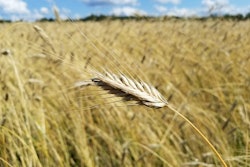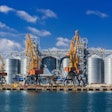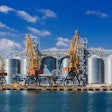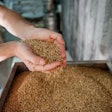
Gov. Tony Evers and the Wisconsin Department of Transportation (WisDOT) have announced nearly $8 million in grants and loans for freight rail improvement projects across the state through theFreight Railroad Preservation Program(FRPP).
Three of the projects will help Wisconsin grain processing and animal feed milling facilities lengthen rail spurs, install conveyance equipment, and increase storage capacity.
“Wisconsin’s economy relies on a robust network of roads, ports, and railways, and investing in our state’s transportation infrastructure, including our freight rail network, is a positive investment for the future of industry, our economy and our entire state,” said Gov. Evers.
Program will improve rail infrastructure at feed & grain facilities
Wisconsin'sFreight Railroad Infrastructure Improvement Program(FRIIP) is a revolving loan program used to improve rail infrastructure and construct new rail-served facilities.
Recipients include:
- Rio Creek Feed Millin Luxemburg, Kewaunee County:$1.5 million FRIIP loan to improve efficiency of the Luxemburg facility for rail car loading and unloading by investing in above-track storage capacity improvements and conveyance equipment. The facility receives inbound carloads of canola meal, soybean meal, corn gluten and dried distiller grains.
- Northside Elevatorin Stanley, Chippewa County:$3 million FRIIP loan to construct 6,878 feet of track for a new rail-served agronomy and feed terminal in Stanley on Canadian National Railway’s Minneapolis Subdivision. This project will be the first phase of a multi-phase, multi-year buildout of the site. If construction is completed in 2022, 650 carloads of potash, gypsum, canola meal, soda, corn gluten, and other feed and agronomy commodities are forecast to be inbound per year to the facility by 2025.
- DeLong Companyin Port of Milwaukee, Milwaukee County:$1.5 million FRIIP loan for installation of conveyance equipment at its new rail-served grain terminal at the Port Milwaukee. Dried distiller grains are expected to be transported by rail from Iowa and Minnesota, resulting in substantial transportation cost savings.
“The movement of products and commodities is the lifeblood of our economy, affecting nearly every aspect of our lives,” said WisDOT Secretary Craig Thompson.
“Strategic investments that improve connectivity and efficiency of freight rail have a big impact on urban and rural communities all across the state.”




















